Table of Contents
- Key Differences Between Mustard Seeds and Ground Mustard
- Flavor Profiles and Culinary Uses
- Storage Guide: Maximizing Shelf Life
- Optimal Usage Techniques for Each Form
- Buying Guide: Selecting Quality Products
- Frequently Asked Questions
- Conclusion
Key Differences Between Mustard Seeds and Ground Mustard
When comparing mustard seeds versus ground mustard, understanding their fundamental differences is essential for proper culinary application. The primary distinction lies in their physical form, flavor activation process, and shelf stability.
| Characteristic | Mustard Seeds | Ground Mustard |
|---|---|---|
| Physical Form | Whole seeds (black, brown, or yellow varieties) | Fine powder created by grinding seeds |
| Flavor Activation | Requires heat, moisture, or crushing to release enzymes | Immediately active upon contact with liquid |
| Flavor Intensity | Milder when raw, becomes pungent when activated | Stronger, more consistent heat level |
| Shelf Life | 3-4 years when properly stored | 6-12 months before noticeable potency loss |
| Best Culinary Applications | Pickling, tempering, baking, whole-seed recipes | Sauces, dressings, marinades, spice blends |
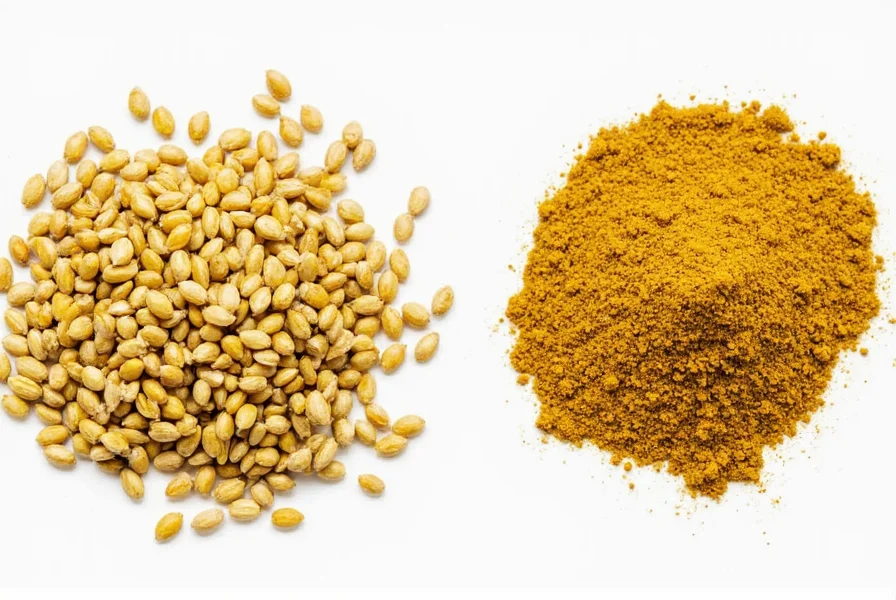
Mustard seeds contain myrosinase enzymes and sinigrin compounds that remain dormant until activated by moisture, heat, or mechanical disruption. When these components mix, they create the characteristic pungency through a chemical reaction producing allyl isothiocyanate. Ground mustard has already undergone this activation process during production, delivering immediate flavor impact without additional preparation steps.
For precise substitution in recipes, use this ratio: 1 teaspoon ground mustard equals 1.5 teaspoons mustard seeds. When substituting seeds for ground mustard, toast and lightly crush them first to activate the enzymes and approximate the ground form's potency.
Flavor Profiles and Culinary Uses
Mustard Seeds: Controlled Flavor Release
Mustard seeds provide nuanced flavor development as their pungency activates gradually during cooking. Different varieties offer distinct flavor profiles:
- Black Mustard Seeds: Most pungent, with complex nutty notes; ideal for Indian cuisine and robust pickling recipes
- Brown Mustard Seeds: Moderately hot with earthy undertones; perfect for tempering in lentil dishes and salad dressings
- Yellow Mustard Seeds: Mildest variety with bright tang; commonly used in American-style mustards and mild pickles
Ground Mustard: Immediate Flavor Impact
Ground mustard delivers consistent, immediate heat that integrates smoothly into liquid-based preparations. Its primary culinary applications include:
- Condiment Creation: Essential base for homemade mustards (combine with vinegar, water, salt)
- Meat Preparation: Key ingredient in dry rubs and marinades for beef, pork, and poultry
- Sauce Enhancement: Adds depth to cheese sauces, barbecue sauces, and creamy dressings
- Baking Applications: Provides subtle heat in pretzels, cheese breads, and savory pastries
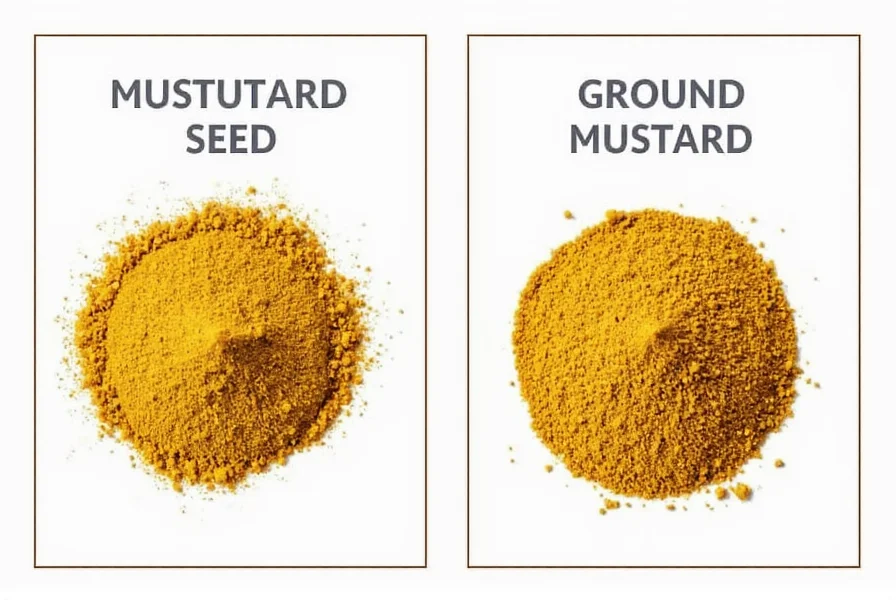
Optimal Flavor Activation Techniques
Maximize mustard's flavor potential by controlling the activation process:
- Formaximum heat: Mix ground mustard with cold water and let sit 10-15 minutes before use
- Formilder flavor: Combine with warm liquid or vinegar immediately before use
- Forseeds in cooking: Temper in hot oil until they pop (Indian tadka technique) to release full aroma
- Forpickling applications: Add whole seeds to brine for gradual flavor infusion without excessive heat
Storage Guide: Maximizing Shelf Life and Potency
Proper storage techniques significantly impact mustard's flavor retention and potency. Understanding the different requirements for seeds versus ground forms is crucial for maintaining quality.
| Storage Factor | Mustard Seeds | Ground Mustard |
|---|---|---|
| Container Type | Airtight glass or metal containers | Airtight, opaque containers |
| Ideal Temperature | Cool pantry (60-70°F/15-21°C) | Refrigerated (40°F/4°C or below) |
| Light Exposure | Complete darkness preferred | Complete darkness essential |
| Maximum Freshness | 3-4 years | 6-12 months |
| Long-Term Storage | Freezer safe (up to 5 years) | Refrigeration extends life by 3-6 months |
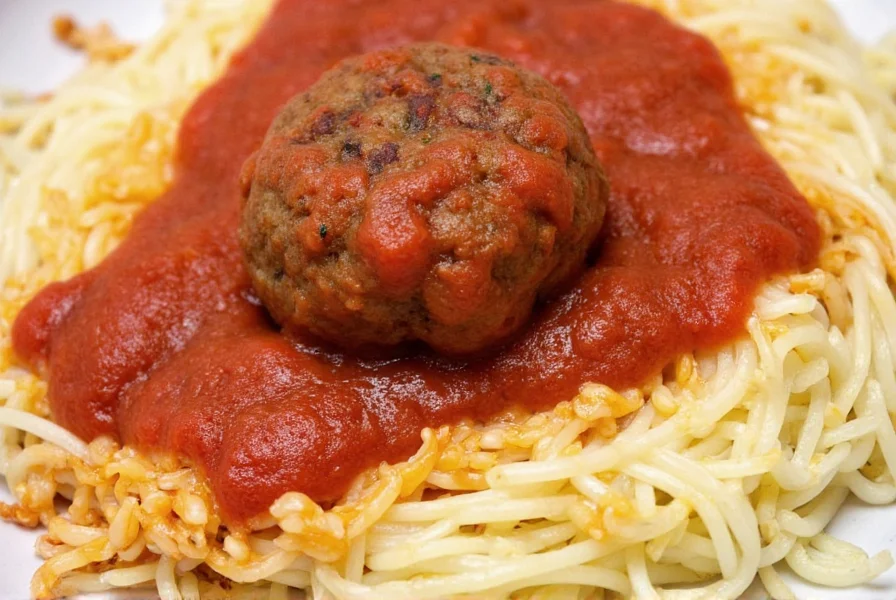
Critical Storage Considerations
- Avoid moisture exposure: Mustard compounds degrade rapidly when exposed to humidity
- Temperature control: Heat accelerates the breakdown of volatile compounds responsible for pungency
- Light protection: UV light degrades the compounds that create mustard's characteristic heat
- Smell test verification: Fresh mustard should have immediate pungent aroma; weak smell indicates potency loss
For commercial kitchens or frequent users, consider purchasing smaller quantities of ground mustard more frequently to ensure maximum freshness, while mustard seeds can be bought in larger quantities due to their superior shelf stability.
Optimal Usage Techniques for Each Form
When to Choose Mustard Seeds
- For controlled flavor release: Whole seeds gradually infuse dishes during cooking without immediate intense heat
- For textural elements: Adds pleasant crunch to breads, crackers, and vegetable dishes
- For traditional Indian cooking: Essential for tadka (tempering) technique where seeds pop in hot oil
- For pickling applications: Provides complex flavor without overwhelming initial heat
When to Choose Ground Mustard
- For immediate flavor impact: Ideal when consistent heat is needed from the start of cooking
- For smooth sauces and dressings: Blends seamlessly without textural interruptions
- For spice rubs: Adheres better to meat surfaces than whole seeds
- For baking applications: Distributes evenly throughout doughs and batters
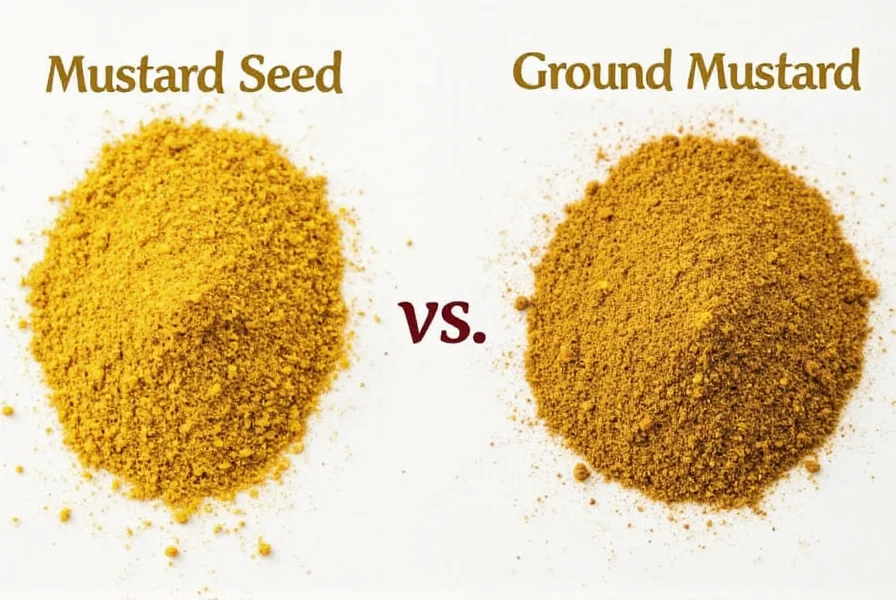
Advanced Technique: Custom Mustard Blending
For professional-level results, combine both forms:
- Start with 2 parts mustard seeds (toasted and lightly crushed)
- Add 1 part ground mustard for immediate flavor base
- Mix with cold liquid (water, vinegar, or beer) and let sit 15 minutes
- Add flavor enhancers like honey, turmeric, or garlic powder
- Allow mixture to rest 24 hours for full flavor development
This hybrid approach delivers both immediate flavor impact and sustained heat development throughout cooking.
Buying Guide: Selecting Quality Mustard Products
What to Look for in Mustard Seeds
- Appearance: Seeds should be uniform in size and color, with no discoloration or debris
- Aroma: Fresh seeds should have a faintly nutty scent; strong odor indicates age or poor storage
- Origin: Canadian and Indian varieties generally offer superior flavor profiles
- Packaging: Opaque, airtight containers protect against light and moisture damage
What to Look for in Ground Mustard
- Color: Vibrant yellow indicates freshness; dull or brownish hue suggests age
- Texture: Should be fine, uniform powder without clumping
- Ingredients: Pure ground mustard without fillers or anti-caking agents
- Brand reliability: Established brands maintain consistent quality standards
| Culinary Application | Recommended Form | Specific Product Recommendation |
|---|---|---|
| Indian Curries & Dals | Black Mustard Seeds | Simply Organic Black Mustard Seeds |
| Pickling Cucumbers | Yellow Mustard Seeds | Schiff Foodservice Yellow Mustard Seeds |
| Homemade Mustard | Ground Mustard + Seeds | Colman's Dry Mustard with Brown Seeds |
| BBQ Rubs | Ground Mustard | Spice Islands Organic Ground Mustard |
Specialty Considerations
- Organic certification: Ensures no synthetic pesticides were used in cultivation
- Whole vs. pre-ground: For maximum freshness, purchase whole seeds and grind as needed
- Regional variations: French mustard often contains wine, while English varieties are more pungent
- Color considerations: Yellow mustard provides bright color without darkening dishes
Frequently Asked Questions
Can I substitute ground mustard for mustard seeds in recipes?
Yes, with proper ratio adjustment. Use 1 teaspoon ground mustard for every 1.5 teaspoons mustard seeds. However, the flavor development differs significantly - ground mustard provides immediate heat while seeds require activation. For best results when substituting seeds for ground mustard, toast them first and lightly crush before adding to your recipe. The substitution works well in sauces and dressings but may not provide the same textural element in breads or pickles.
Which is hotter: mustard seeds or ground mustard?
Ground mustard typically delivers more immediate heat because the compounds are already activated. Whole mustard seeds only release significant heat when cracked, soaked, or heated. Black mustard seeds are generally the hottest variety, followed by brown, then yellow. The actual heat level depends on preparation method - mustard made with cold water will be hotter than when prepared with warm liquid or vinegar, as heat degrades the pungent compounds. Properly stored ground mustard maintains consistent heat levels, while seed heat varies based on activation technique.
How do I make my own ground mustard from seeds?
To make high-quality ground mustard: 1) Toast mustard seeds in a dry skillet over medium heat for 2-3 minutes until fragrant 2) Cool completely 3) Grind using a spice grinder, coffee grinder (dedicated to spices), or mortar and pestle 4) For prepared mustard, mix 1 part ground mustard with 1 part cold water 5) Let sit 10-15 minutes to activate 6) Add vinegar, salt, and flavorings to taste. The flavor will continue developing over 24 hours. For best results, grind only what you'll use within 2-3 months as homemade ground mustard loses potency faster than commercial products.
Why does my ground mustard lose potency faster than seeds?
Ground mustard loses potency faster due to increased surface area exposing volatile compounds (allyl isothiocyanate) to air, light, and moisture. Whole seeds protect these compounds within their shells. Once ground, oxidation accelerates, degrading the compounds responsible for mustard's characteristic heat. Proper storage in airtight, opaque containers in cool, dark places significantly extends ground mustard's shelf life. For maximum freshness, purchase whole seeds and grind them as needed for critical applications requiring peak potency.
What's the optimal temperature for activating mustard flavor?
The enzyme myrosinase, which creates mustard's pungency, works best between 95-105°F (35-40°C). Below this range, activation is slow; above 140°F (60°C), the enzyme becomes deactivated. For maximum heat, mix ground mustard with cold water and let sit 10-15 minutes. For milder flavor, use warm liquid or vinegar immediately. When using seeds, tempering in oil around 350°F (175°C) creates optimal flavor release without destroying the compounds. The timing of liquid addition during cooking significantly impacts final flavor intensity in dishes.
How long do mustard seeds and ground mustard maintain peak quality?
Properly stored mustard seeds maintain peak quality for 3-4 years, though they remain safe indefinitely. Ground mustard retains optimal potency for 6-12 months. For maximum shelf life, store seeds in airtight containers in cool, dark places (freezer storage extends life to 5+ years). Ground mustard benefits from refrigeration after opening. Always perform the smell test - fresh mustard should have immediate pungent aroma; weak scent indicates potency loss. Commercial products typically have "best by" dates, but proper storage often extends usability beyond these dates.
Conclusion: Mastering Mustard for Culinary Excellence
Understanding the precise differences between mustard seeds and ground mustard transforms your cooking from ordinary to exceptional. By selecting the appropriate form for each application, controlling activation methods, and implementing proper storage techniques, you unlock mustard's full culinary potential.
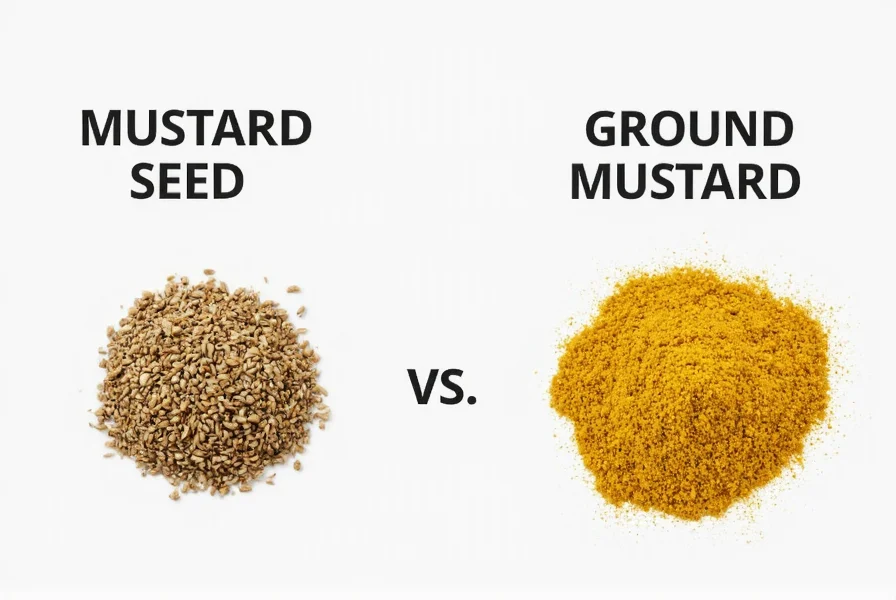
Remember that mustard isn't merely a condiment but a sophisticated flavor builder that enhances everything from delicate sauces to robust pickles. The choice between seeds and powder determines not just heat level but texture, flavor development timeline, and overall dish complexity. Armed with this knowledge, you're now equipped to use mustard with precision and confidence in every culinary creation.










 浙公网安备
33010002000092号
浙公网安备
33010002000092号 浙B2-20120091-4
浙B2-20120091-4